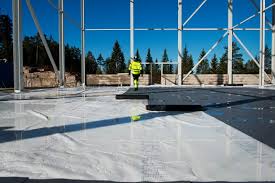Building a Healthier Environment: Radon Mitigation in Construction
Ensuring the safety and well-being of workers and occupants is paramount in any construction project, and one often overlooked hazard is radon gas. Radon, a radioactive gas that occurs naturally in soil and rock, can seep into buildings through cracks in foundations, posing serious health risks when levels become elevated. Recognizing the importance of radon protection on construction sites is crucial for creating healthier environments and minimizing health hazards. Check out: Radonhjelpen Øst
Implementing radon mitigation measures during construction can significantly reduce the risk of exposure to elevated radon levels. By installing vapor barriers, sealing foundation cracks, and incorporating radon-resistant construction techniques, builders can prevent radon from entering structures and accumulating indoors. These proactive measures not only protect construction workers during the building process but also safeguard future occupants from potential health hazards associated with radon exposure.

Furthermore, integrating radon-resistant features into building designs can yield long-term benefits for occupant health and safety. By incorporating radon-resistant materials and construction techniques from the outset, builders can mitigate radon infiltration and minimize the need for costly retrofits or remediation efforts down the line. This proactive approach not only enhances the overall quality of construction but also demonstrates a commitment to creating healthier indoor environments for occupants.
Moreover, raising awareness among construction industry professionals about the importance of radon protection is essential for fostering a culture of safety and responsibility. By educating builders, contractors, and developers about the risks associated with radon exposure and the benefits of radon mitigation strategies, stakeholders can work collaboratively to prioritize radon protection in construction projects. This collective effort not only improves construction practices but also contributes to the broader goal of promoting public health and well-being.
In conclusion, prioritizing radon protection on construction sites is essential for creating safer and healthier indoor environments. By implementing radon mitigation measures, integrating radon-resistant features into building designs, and raising awareness among industry professionals, construction projects can effectively minimize the risks associated with radon exposure. By taking proactive steps to address this hidden hazard, builders can ensure that their projects prioritize the health and safety of both workers and occupants.
